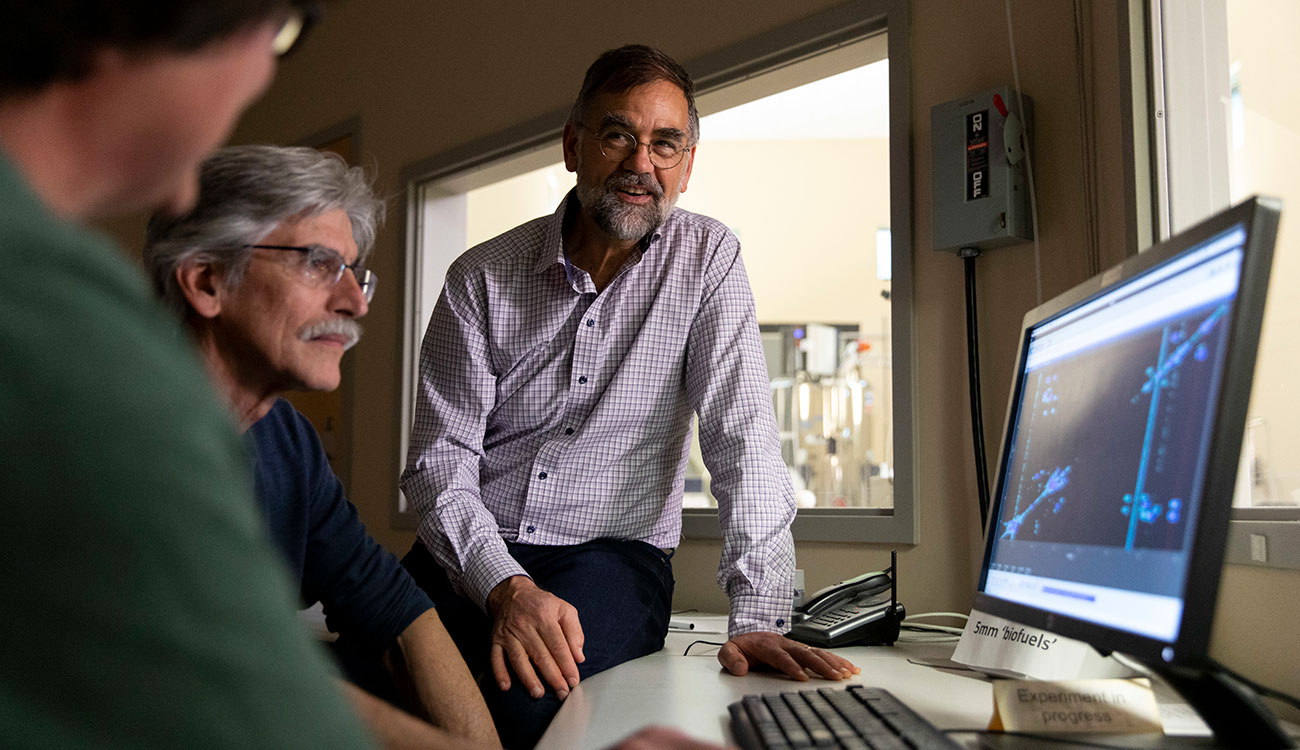Within weeks of the appearance of COVID-19, five teams of researchers at the University of Georgia’s Complex Carbohydrate Research Center put other research work aside to understand the virus, how it gets into our cells, and the changes that occur inside infected cells.
This work could help identify patients most at risk early, identify ways to slow down the disease, understand which drugs provide some hope to fight it, and perhaps, in a more distant future, to even develop vaccines for viruses before a disease spreads in humans.
With COVID-19, like other diseases, a key part of understanding the disease is understanding the role played by branching structures of sugars called complex carbohydrates or glycans.
“There is no human disease that doesn’t in some way involve carbohydrates,” said Michael Tiemeyer, Distinguished Research Professor and co-director of the CCRC.
And no center in the world brings together as many world-renowned carbohydrate researchers as CCRC, which this year is celebrating 35 years of being a leader in glycoscience, or the study of complex carbohydrates.
A global challenge
CCRC faculty member and GRA Distinguished Investigator Lance Wells and other UGA collaborators are working to study the virus and its coating of carbohydrates that affect COVID-19’s ability to bind to a host.
Rob Woods, professor of biochemistry and molecular biology, and his collaborators are applying 3D computational models they had created to study influenza to understand the novel coronavirus. Their models analyze the position of glycans on the virus’s surface that help it evade the host’s immune system.
When a virus tries to infect a cell, it first encounters a wall of glycans that covers the cell. Geert-Jan Boons, UGA Foundation Distinguished Professor in Biochemical Sciences, studies how viruses find a way through this carbohydrate forest. His lab creates complex carbohydrates, like the ones that surround human cells, to test whether viruses can bind to them or not. For the COVID-19 research they are focusing on a class of carbohydrate that they already had successfully produced.
Carbohydrates also play a role in how the COVID-19 infection progresses.
“The problem my team and I are trying to answer is how to know who should go into the hospital and who shouldn’t,” Tiemeyer said. “Just knowing how much virus someone has isn’t enough, because severity doesn’t necessarily correlate with viral load.” His collaborators, respiratory biologists at the University of North Carolina, discovered that COVID-19 targets glands in the airway.
It is not only glands that the disease affects. The metabolism of any infected cell will change, too, and traces of these changes can be found in the blood.
The starting point for Art Edison’s group is comparing blood samples from ferret models. Edison’s expertise lies in identifying small molecules in the blood called metabolites—basically any small molecule in our bodies, in our food, or produced by our cells, such as cholesterol and vitamins—using CCRC’s specialized facilities.
Edison also stressed that, if collaboration and knowledge sharing are a key part of what the CCRC does, they matter now more than ever.
“In this project, more than in any other in my career, we want to make measurements that will make a difference and share our data as soon as it is collected and we know it’s any good,” he said. “It is not the time for personal territory or trying to be the first at publishing.”


